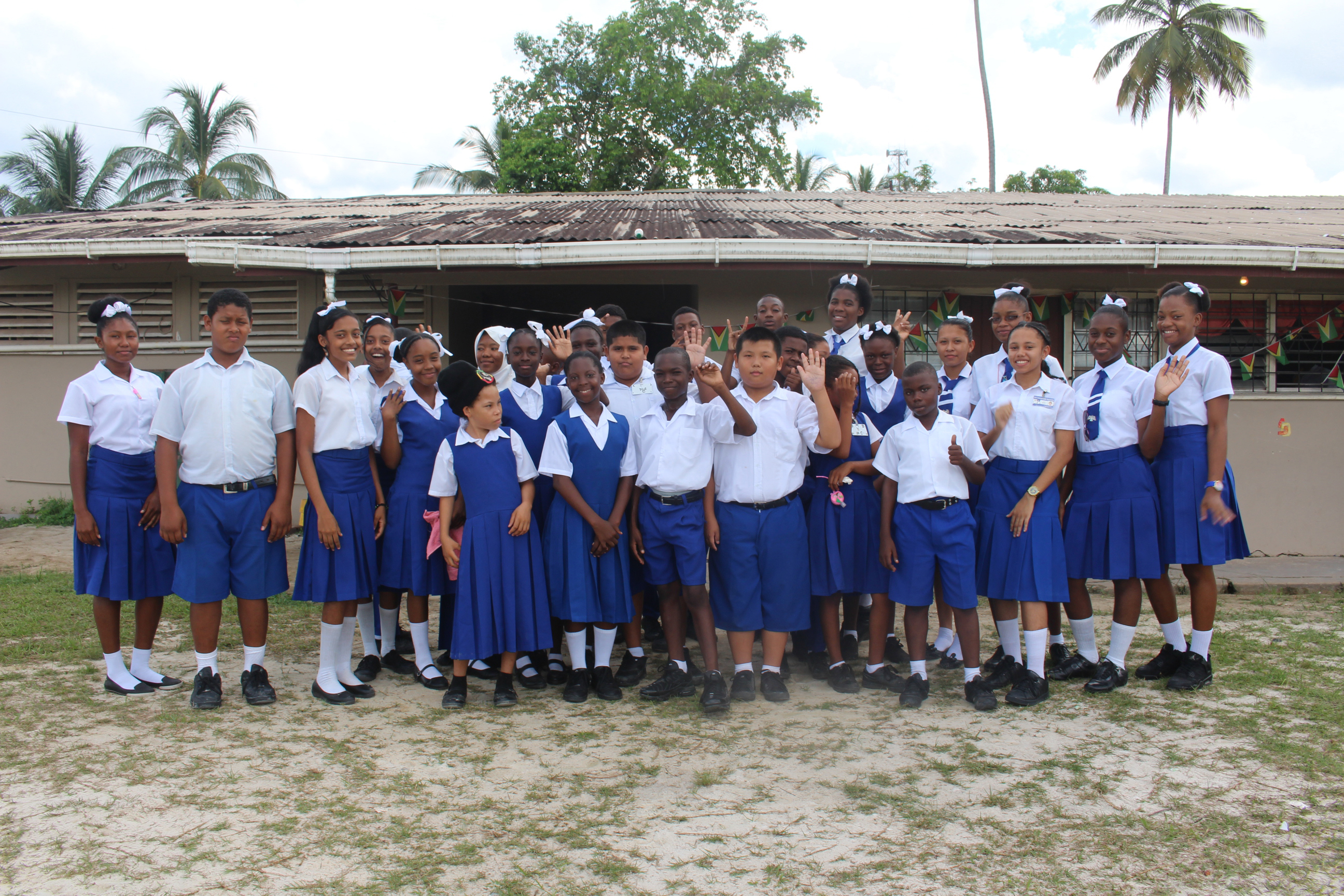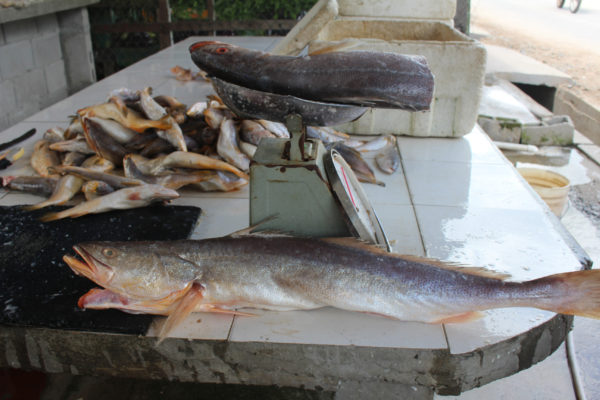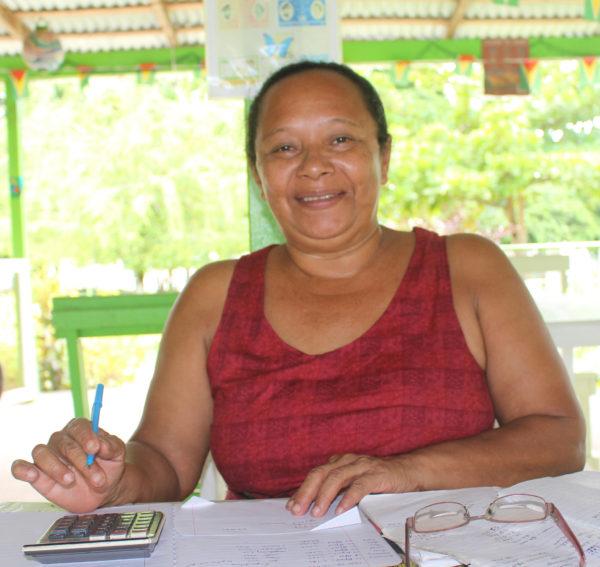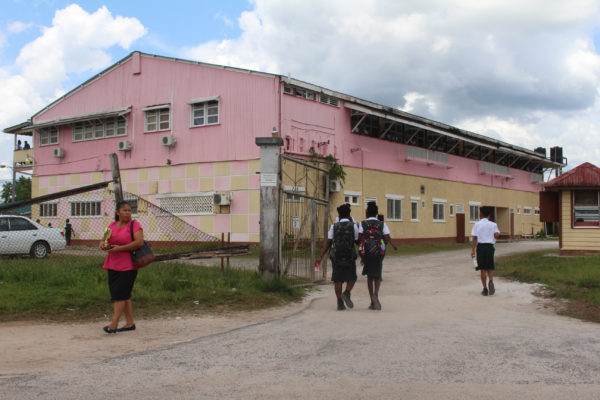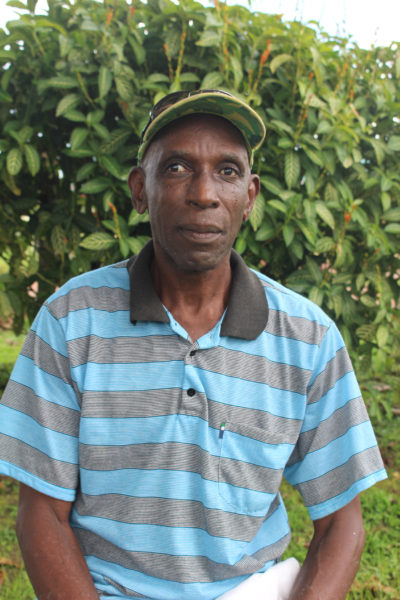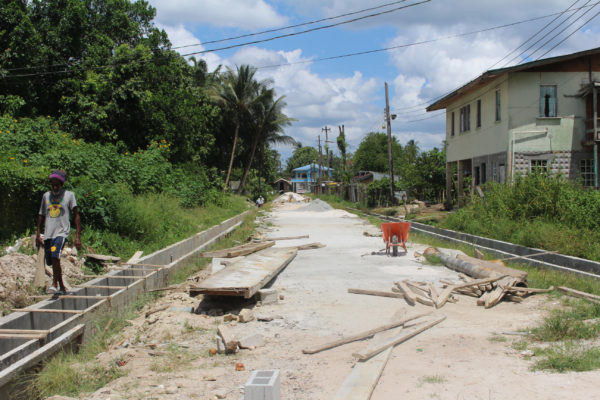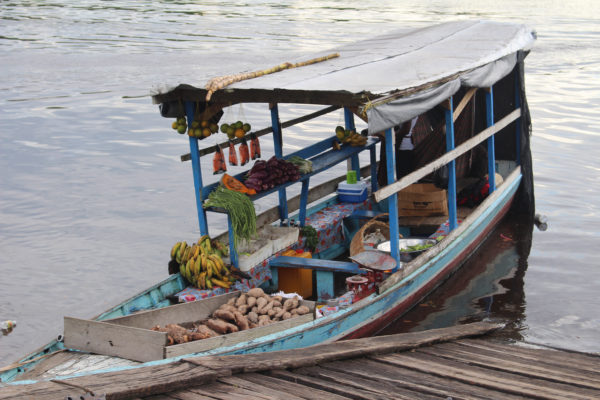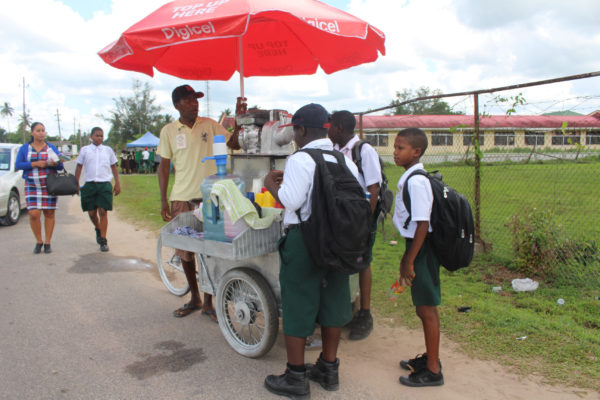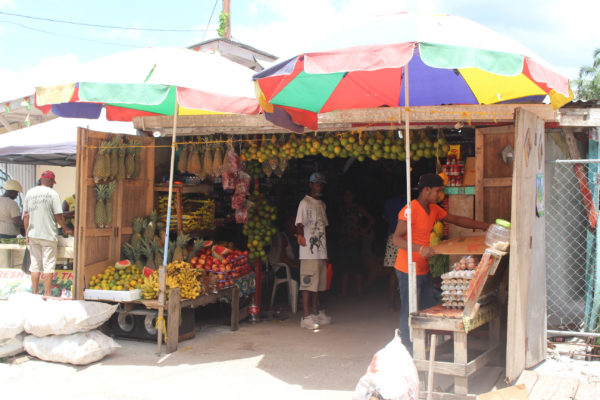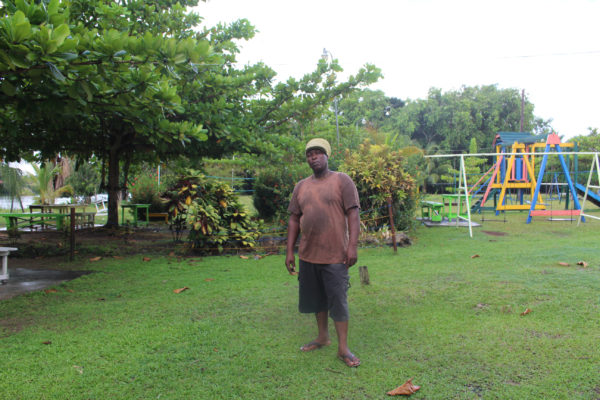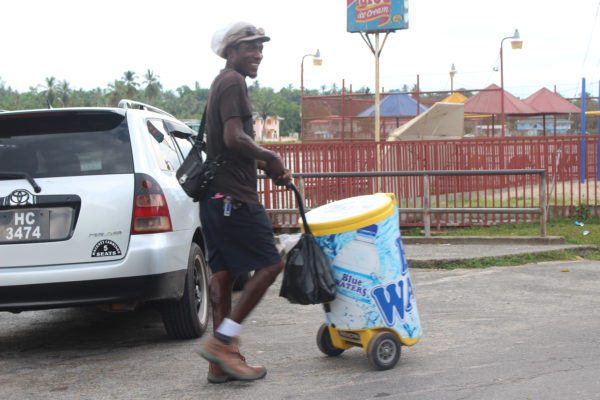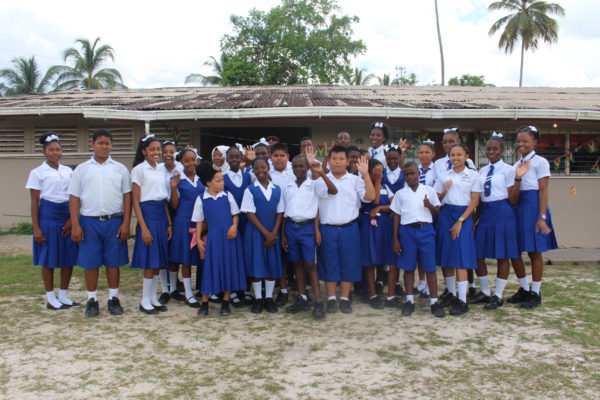Photos by Joanna Dhanraj
Visits to places outside of Georgetown serve as learning experiences. Hearing the average resident speak about his/her life adds to the general knowledge of the Guyanese way of life. On a trip to Mackenzie last week, the learning curve started at the bus park. I boarded a bus that had a reasonable number of people assuming that it would fill quickly and we would soon be on our way. A short while later, I was aghast when the conductor returned to the bus and said, “Two hundred for you, two hundred for you and you,” and the three people who received the money got up and left the bus. It then struck me that these persons were paid to make bus look a little less empty so as to attract passengers. It was an hour after I had boarded the bus that it finally left.
The Soesdyke-Linden Highway is always a spectacular sight and almost an hour and a half later we approached the Digicel sign saying ‘Welcome to Linden’.
Central Mackenzie was the stop and I was happy to stretch my legs. Mackenzie looks somewhat like Georgetown in terms of congestion and with its businesses, public buildings, banks and crowded pavements. At one end, runs the Demerara River that separates Mackenzie from Wismar.
According to information from the Linden Town Council, “Linden emerged out of Macmarburg in the late 60s, which was a combination of three settlements, Mackenzie, Wismar and Christianburg.
“The economic balance shifted in these settlements in 1916 with the discovery of bauxite and major activities occurring on the east bank of the Demerara River now known as Mackenzie. This area was named after Mr George Bain Mackenzie, the geologist who secured land for mining under the pretext that oranges would be cultivated. Some radical historians would say he stole the land.
“Mackenzie became more prominent when Demerara Bauxite Company Limited, a subsidiary of Aluminium Company of Canada, established a pristine housing area for senior staff. Its layout was distinct since all the major roads were laid out in a generally north to south direction and the secondary roads in an east to west direction.”
Many of these roads were named after local woods.
As I go by nearby schools, children have been let out for recess and they flock the vendors selling outside.
Cloudy white water is observed as I pass a few drains and small creeks and I later learn that this is caused by the presence of bauxite. In the distance, a sign saying Hymara Park seems perfect for a bit of shelter from the sun with the midday hour fast approaching. Its lush green lawns decorated with flowers some spilling over the fence are a welcome sight. Hymara Park was named for a fresh water fish and it is situated on the Republic Avenue in a secluded spot among trees just opposite of the Republic Avenue Nursery School and right on the shore of the Demerara River.
With the proprietor, Nevilla Whyte away, Gail Mathurin manages the park. Mathurin hails from Wismar but for the past seven years has been spending most of her time here sometimes until ten at night.
“People from around and out of Linden visit the Hymara Park every now and again,” she said. A small fee of $100 is collected for the upkeep of the park, she added. “The park is mostly visited by schools on tours. At the weekend families can be seen picnicking in the park. Lovers would find themselves here on weekdays and children from nearby schools also would venture in to do homework and study. The swings, slides and see-saws provide much fun for the children.”
The park hosts birthday parties, meetings, and reunions and is also the ideal spot for wedding processions which often find themselves there to take photos. The park is also graced by the presence of veteran soldiers who hang out here to do some catching up while enjoying their drinks.
According to Mathurin, the park promotes family values. Families sometimes fish here and Easter holidays would bring in a large crowd.
Apart from liquor, Mathurin also sells other beverages and snacks. Business, she says, is sometimes slow but has its good days.
“I find most of the people in Mackenzie to be very courteous. I’ve never had a problem,” Mathurin said.
She added, “We don’t have any other place like the Hymara Park in Mackenzie, in fact in all of Linden.”
To get home at night, Mathurin takes a taxi over the bridge to Wismar though there are speed boats working 24/7.
During our interview with Mathurin, a customer had stepped in and was listening in. He was Marvin Burns, former president of the Linden Chamber of Commerce (2010-2012).
“The first time I saw Linden I was eight or nine. I’d just come to visit my relatives in Blueberry Hill during the school holidays. My mother would send me for two or three weeks in August and Easter time. I lived in Georgetown. By 1964, my visits lessened after I began attending high school,” Burns said.
“After, I left Guyana for Netherlands, where I lived for over 20 years. My wife (who was British) and I bought a sailing yacht and wanting to sail Transatlantic, we decided to sail from England to Guyana. After two years of planning we left in June and arrived in Guyana at the ending of February. When we arrived in Georgetown there wasn’t adequate place for mooring and we were hosted by the Guyana Defence Force Coastguard for a few days,” he reminisced.
While there, they were invited by friends from the GDF to visit Linden; they were told that Linden had adequate place for mooring.
“Thanks to Linmine, we were allowed to stay here. After being on the ocean for so long Linden looked so exciting! Linden looked wonderful. This was my wife’s first visit to Guyana. We were well received. Our intentions were to hang out here for a year then possibly sail to Australia,” he said.
However, the most sailing they did was right there, since they were up and down the Demerara River. “While here we got involved in a lot of community-oriented work. We tried to rejuvenate cricket. We got involved in other activities including the Linden Economic Advancement Programme [LEAP] that ran for seven years. We carried out a significant survey. The LEAP was in collaboration with the EU and the Guyana Government,” he said.
Speaking of Mackenzie, he said, “Most people living here are self-employed… small-scale businesses. There are also public servants like teachers and police officers. Then there are also persons working at Bosai Bauxite Company. Mackenzie has all the potential to become major. We have a skilled work force. Most of these people are multi-skilled; most are computer literate. I think we need to have a more comprehensive plan for Linden to progress.”
Concerning places of worship Mackenzie has a number of churches, no temples and the only masjid Burns can recall is situated across the river.
After Georgetown, Burns believes Mackenzie comes in second as being the liveliest place in Guyana. Of the six ethnicities in Guyana he gives account for five.
“We need a more structured plan like road and street lights; a plan that says this is what we want Mackenzie to look like and we work to achieve it,” he said.
